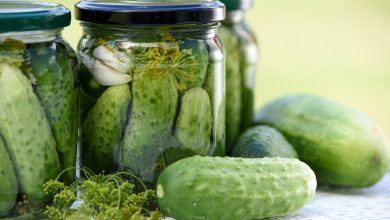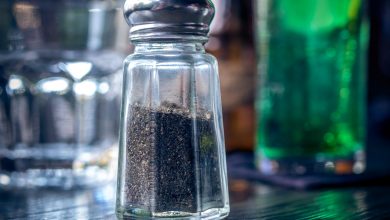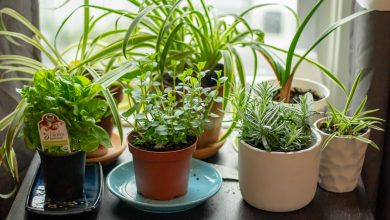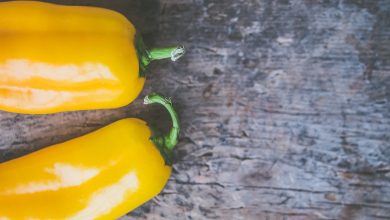Gardening 101: 8 Easy To Grow Vegetables For New Gardeners
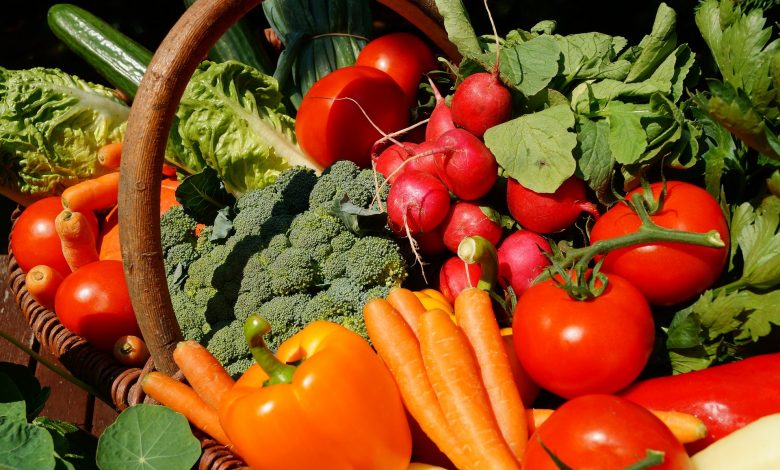
There are many reasons why you would want to start a vegetable garden. If you are the health-conscious type, then growing your own food ensures that you get organic produce safe from harmful chemicals.
For the budget-minded folks, growing your food can save money, especially during seasons where the price of vegetables goes up. But if you are like us, gardening is more of a hobby. Not being a green thumb can definitely be frustrating, but thankfully, starting your own garden is one the best ways to get rid of the ‘curse.’
As is true with many things, success is a big motivator. So when you decide to start your garden, it is best to choose vegetables that are easy to grow and don’t require much work. When you see your hard work paying off, you are more likely to continue and expand your garden to include more challenging projects.
To help you get started, we’ve gone ahead and put together a list of some of the easiest vegetables to grow so that you are nearly guaranteed success, no matter your skill level.
1. Lettuce

Quick Facts
Germination Time:
Approximately 2 to 14 days
Temperatures:
45 to 75 degrees Fahrenheit
Spacing:
6 to 18 inches apart, depending on the variation
Ideal Light:
Sunny to partial shade
Best Companions:
Beetroot, carrots, radishes, chives, and garlic
Harvest Time:
65 to 80 days, depending on the variation
Lettuce comes in different types and sizes that vary from leaf lettuce to head lettuce like romaine or iceberg. Leaf lettuce makes an excellent base for a green salad, and there is no end to the different uses of head lettuce. This awesome vegetable is a practical place to start our list. Another interesting advantage of leaf lettuce is that you can actually harvest the outer leaves while leaving the center leaves intact and growing.
To get started with growing it, you’ll need seeds. These can easily be found at just about any gardening store.
This plant thrives in cold weather and is best planted in early spring or fall. Lettuce seedlings can even handle frost as long as the temperatures stay above 45 degrees Fahrenheit.
If you find yourself in a situation where the temperature drops below this ideal range, just cover the seedlings with a plastic sheet. If you are looking for an all-year-round vegetable, lettuce is perfect, especially if you have a cold frame greenhouse.
Another reason why lettuce is an ideal beginner’s vegetables to plant is that they can be sown directly. When you notice plants clustered together, remove a few outer leaves to give them more room to grow. And that’s about all the maintenance it’ll need. The awesome thing here is the fact that, despite having little to no maintenance to speak of, lettuce has a high average yield compared to many other vegetables on this list. You can plant small crops over time and enjoy having fresh lettuce for months on end.
In terms of pests, an easy way to keep your lettuce safe from any pesky critters is to plant chives or garlic between each head to keep invaders at bay.
It flourishes in well-drained composted soil and can be ready to harvest within 65 to 80 days, depending on the type of lettuce. Germination time is between 2 to 14 days, and the light preference is sunny to partial shade.
2. Cucumbers

Quick Facts
Germination Time:
Approximately 4 to 13 days
Temperatures:
70 to 85 degrees Fahrenheit
Spacing:
12 inches, 3 feet per row
Ideal Light:
Sunny to partial shade
Best Companions:
Carrots, parsley, cauliflower and beans
Harvest Time:
48 to 65 days, depending on the variation
Cucumbers are a great crop to grow, provided you are a fan. Some people just don’t care for cucumbers as veggies, and if that is you, you can skip right over this section. But for cucumber lovers, read on!
Planting cucumbers is straightforward, and you can either put them in the ground or plant them in containers. Usually, the seedlings are kept indoors for three weeks before being transferred to the ground. You can easily find cucumber seedlings at your local nursery.
Since cucumbers are a warm-weather crop, they are best planted after the last spring frost. These vegetables prefer well-drained soil with a lot of sunlight exposure and a bit of compost. If you decide to plant cucumbers, remember that they are a vine and need ample space to run. It is an excellent idea to create a trellis for their vines to help them grow neatly.
If you plan to plant cucumbers in containers, there is a variety called a patio cucumber, which is meant to be grown in a space-limited environment. Simply fill a bucket with dirt and compost and plant one cucumber per bucket. Make sure that they are located in an area with ample sunlight and water them regularly. For the best results, fertilize your cucumbers every month.
3. Green Beans

Quick Facts
Germination Time:
Approximately 6 to 16 days
Temperatures:
55 to 85 degrees Fahrenheit
Spacing:
6 inches, 18 inches per row
Ideal Light:
Sunny to partial shade
Best Companions:
Peas, cabbages, radishes, and potatoes
Harvest Time:
55 to 65 days, depending on the variation
Like cucumbers, green beans are not for everyone. While some love the crunch and earthy taste, others prefer to stay away from these beans. If you are a new gardener, however, green beans should be on your list of vegetables to try growing. They are easy to plant, have a high yield, and are one of the easiest veggies to maintain.
There are different varieties of green beans, and you may need to do a little homework before purchasing seedlings from your local nursery. One of the favorites among green beans are called half runners. These are soft beans that run along a vine. Keep in mind that you will need to make a homemade trellis for these if you’d like a neater garden at the end of the day. And once harvested, it’s good to remember that half runners have strings, so before cooking them, you’ll need to remove those. But aside from these minor issues, green beans are an absolute pleasure to grow.
However, if building a trellis isn’t an option for you, we’ve got the perfect solution. Bush beans are an ideal substitute in this scenario. As the name suggests, this variety of green beans grows in the form of a bush instead of the traditional vine. And they’re super easy to harvest too – all you’ll need to do is move along the row of plants and pull the beans off the bush. This variety also doesn’t have strings, so cooking them is a lot faster.
Whichever type of green beans you choose to plant, make sure you plant them in well-drained soil and in a location where they can get ample sunlight. To plant them, place a generous layer of compost over the row and directly sow the seeds into the compost. Within a few weeks, you’ll notice the beans sprouting in your garden.
Green beans love water, which demands you to monitor their water intake continually. If you see their leaves starting to dry up, it is a sign that you need to give them more water. Another common issue you will face is the yellowing of the leaves. This yellowing is a sign that the soil lacks nitrogen, and you may need to add fertilizer to remedy the situation.
4. Radishes and Carrots

Quick Facts
Germination Time:
Approximately 6 to 21 days
Temperatures:
60 to 70 degrees Fahrenheit
Spacing:
3 inches
Ideal Light:
Sunny to partial shade
Best Companions:
Peas, tomatoes, and lettuce
Harvest Time:
60 to 80 days, depending on the variation
For any beginner gardener, root vegetables are always a safe way to start. Radishes and carrots are among the easiest to grow because they can either be produced in the ground or in a container. When it comes to planting vegetables that offer high nutritional value, you can never grow wrong with carrots and radishes.
When growing any type of root vegetable, it is essential to give the seeds enough space to grow. Another tip is to make sure that the soil is loose around the plants. As with other vegetables, it is best to plant these root crops in compost before replanting them in the ground.
Once you notice the seedlings sprouting, you will need to carefully go through the clusters and make sure they are not growing too close together. Ideally, loose dirt is perfect for carrots because it doesn’t offer any resistance, and they can grow to their full capacity. However, if you only have clay or some other clumpy dirt available, make sure you choose a variety of carrots that is stubbier. Radishes, on the other hand, are more versatile and don’t mind whatever type of soil you plant them in.
Another solution for growing carrots while lacking the ideal type of soil is to plant them in containers using potting mix. To do this, you will need some larger containers like a five gallon bucket with loose dirt and compost. Plant your seeds in this dirt and thin out the clumps after a few weeks. Make sure that your carrots and radishes get enough water and try fertilizing them once a month.
Harvest time is exciting for root vegetables because you finally get to see the size of your carrot. When you notice the leaves getting big, green, and bushy, try pulling out a few to figure out whether its time to harvest or not. If you are not satisfied with their size, continue fertilizing and watering for a few more weeks and then do another test.
5. Bell Peppers

Quick Facts
Germination Time:
Approximately 8 to 25 days
Temperatures:
70 to 90 degrees Fahrenheit
Spacing:
18 to 36 inches
Ideal Light:
Sunny
Best Companions:
Onions, carrots, radishes, and basil
Harvest Time:
60 to 80 days ,depending on the variation
Bell peppers are by far one of the best vegetables to plant because everyone loves bell peppers, right? On top of their wide range of uses, bell peppers are pretty aesthetic additions to your garden. And if you live in a hot climate, they will absolutely flourish throughout the growing season. However, to be safe, you should only plant them when you are confident that the threat of frost is clear.
Again, bell peppers need to be planted indoors and transplanted outside after roughly four to six weeks. You can skip this step by purchasing seedlings from your local nursery instead. Location wise, make sure to plant them in a place where they will get maximum sunlight exposure in well-drained soil. Planting them about four to six inches apart will ensure that they have enough room to grow.
All in all, they are very low maintenance. Aside from the usual weeding and watering, you can leave them to grow and they’ll be just fine on their own. And once planted, in just a few months, you will have some delicious fresh garden-grown peppers ready for picking. Depending on the variety you planted, bell peppers can either turn bright green, yellow, orange, or red when they are ready to be harvested.
6. Tomatoes

Quick Facts
Germination Time:
Approximately 6 to 14 days
Temperatures:
60 to 90 degrees Fahrenheit
Spacing:
18 to 36 inches
Ideal Light:
Sunny
Best Companions:
Basil, carrots, chives, and peppers
Harvest Time:
60 to 100 days, depending on the variation
Tomatoes are another vegetable that you can never go wrong with. Homegrown tomatoes taste nothing like the variety you can buy in grocery stores, and once you have tasted your own produce, you’ll never want another store-bought tomato in your salad again. And aside from being very versatile, these vegetables are relatively easy to grow, which is perfect for all beginner gardeners.
Planting tomatoes is very similar to planting bell peppers, and you will need to start them indoors for 4 to 6 weeks before transferring them outdoors. Or, you could get seedlings from your local nursery to cut down on time.
These plants love full sunlight, so make sure you find the best location for them in your garden with well-drained soil as good drainage is necessary to get the best results. Like bell peppers, tomatoes hate the cold. Only plant them when you are sure the last of the frost is long gone. Adding compost around each plant and topping up every month will ensure healthy growth and a nice yield once they’re mature.
Tomatoes need nitrogen in the soil, and if you notice the leaves turning yellow, follow the same process as you did with the green beans. You can use a rabbit poo or bone meal to increase the levels of nitrogen in the soil, though if neither is easily accessibly any other nitrogen rich fertilizer will do the trick.
Aside from the regular watering and fertilizing, tomatoes don’t need too much babysitting. One piece of advice, though, is to never plant bell peppers and tomatoes together. Bees tend to cross-pollinate the two, which will destroy the flavor of your tomatoes.
7. Yellow Summer squash

Quick Facts
Germination Time:
Approximately 6 to 12 days
Temperatures:
70 to 90 degrees Fahrenheit
Spacing:
12 inches, 3 feet per row
Ideal Light:
Sunny to partial shade
Best Companions:
Beans and Peas
Harvest Time:
48 to 65 days, depending on the variation
Summer squash is another very easy vegetable to grow if you are new to gardening. If you want to get down to business without waiting for seeds to sprout, we recommend you head to your local nursery and get squash seedlings.
Once you have your seedlings, find a place that has a lot of sunlight exposure and well-drained soil. Like green beans, squash grows on a vine, so you may need to build a trellis, or if you don’t’ mind, you could let them run along the ground.
All you’ll need to do is fertilize your squash at least once a month and keep a regular watering schedule. And in about two months’ time, you’ll be ready to harvest those yellow beauties.
8. Spinach

Quick Facts
Germination Time:
Approximately 6 to 21 days
Temperatures:
35 to 75 degrees Fahrenheit
Spacing:
8 inches
Ideal Light:
Sunny to partial shade
Best Companions:
Cabbage, eggplant, onions, asparagus, and strawberries
Harvest Time:
40 to 50 days, depending on the variation
Last but not least, we’ve got spinach. Aside from being Popeye’s favorite food, spinach is a super-food that should definitely be part of your family’s diet – especially when it comes straight from your own garden!
There are different varieties of spinach you can choose from like savoy, flat-leaf, semi-savoy, and even heat-resistant types. Do some experimenting and find the one that works best for you.
Growing spinach is a lot like growing lettuce; you can plant spinach all year round, and these vegetables also love the cold. They are more cold-tolerant than lettuce and can even survive in temperatures as low as 15 degrees Fahrenheit! When it comes to planting spinach, you want to plant it in a location that gets partial sun and shade, with some well-drained soil to boot.
Keep in mind: Spinach is best planted directly in the ground. Although you can plant it indoors and later transplant it to your garden, this is not recommended because the very delicate seedlings are difficult to transplant successfully.
Once your seeds start to sprout, you will need to thin out the area after a few weeks to make sure no clusters remain that could hinder the growth of the leaves. You can also grow spinach indoors since it doesn’t require much space and can give a nice earthy ambiance to your home.
